If the pandemic has taught us anything, it is that change is the only constant. Businesses and people who were willing to adapt to the change with flexible processes and quick reactions survived those trying ties.
But even before the pandemic, many of us had understood the need for continuous learning to remain relevant and employable. As the technological advancements of the Fourth Industrial Revolution continue to change the workplace, the World Economic Forum now anticipates that 50% of all employees will require reskilling by 2025.
Today we have three generations in the workforce because older workers live longer, healthier, and more productive lives and aren't ready to retire. But the difference in the skills and knowledge of these workers is massive. To close the gap, digital workplaces need to encourage their employees to embrace continuous learning and make sure that their team leaders are the custodians of change, flexibility, and transformation.
Benefits of Continuous Learning in Digital Workplaces
Continuous learning is a team management strategy that encourages managers to provide their employees with ongoing and regular learning opportunities. This is especially effective in fast-growing or otherwise busy companies, where an employee's personal and professional development is prioritized as a critical task during the workday.
There are numerous perks of continuous learning, and you can hardly deny any of them. Here are a few of the benefits that can work in favor of the employee and employer as well:
1. Employees can broaden their horizons and upskill by learning vital skills in new fields.
2. It improves employee morale by making them feel encouraged, driven, and valued.
3. You may assist your staff in being more adaptable and flexible in situations outside of their comfort zones.
4. 94 percent of employees want to stay with a company that invests in their professional growth. A culture of continual learning aids employee retention, and they are 83 percent more likely to be pleased.
5. Individuals' soft skills, such as communication, teamwork, and critical thinking, are strengthened via continuous learning.
6. You may encourage staff to advance to more senior positions and develop critical leadership skills.
7. Work challenges may be addressed more efficiently and at a faster turnaround rate with a well-developed team.
8. When people feel capable and involved in their work, they are more likely to be innovative and creative.
What Does it Take to Develop a Culture of Continuous Learning
Whether digital or not, it is essential for workplaces to develop a culture of continuous learning, and here are some ways they can achieve that.
Promote Knowledge Sharing
Knowledge sharing is the process through which expertise, knowledge, and skills are exchanged inside a firm. It recognizes that every person, regardless of their position in the organization's hierarchy, has something worthwhile to contribute. Thanks to a knowledge-sharing culture, you can deliver practical knowledge to your employees at the right time.
It enables employees to work more efficiently, share insights and ideas, and identify past mistakes that may have the potential to reoccur. It can also provide you with a significant advantage over your competitors.
Here are a few strategies that can assist you in knowledge sharing:
- Encourage cross-team collaboration
- Revamp your onboarding process
- Encourage employees to create content
- Incentivize knowledge sharing
- Use the company intranet
- Build the right environment
Enable Learning Paths and Offer Free Resources
Many employees don't go for continuous learning because of the fees they have to pay for each course. However, if you guide or provide them with free learning paths and comprehensive resources, they may be more willing to adopt the practice. For instance, LinkedIn Learning routes associated with each of these occupations are available for free since the end of March 2021 to help people gain the skills they need for in-demand jobs.
Each learning route has a series of videos aimed at helping job seekers build the essential skills required for each position. Currently, every learning path is available in English, Spanish, German, and French.
Connecting Skills to Opportunities
You can help your employees to enroll or signup for industry-recognized certificates and practical job-search tools that aim to assist job seekers in demonstrating their abilities to potential employers.
There are various resources that provide low-cost entrance to industry-recognized Microsoft Certifications based on examinations that demonstrate Microsoft technology expertise.
For individuals who seek to upskill, Microsoft offers assessments for these Microsoft Certifications at a drastically reduced charge of $15 to people who self-attest that COVID-19 has influenced their employment.
Connect With Definity First to Source Continuous Learning Opportunities
The evolution of the workplace has been accelerated by years of rapid change. Organizations will need to incorporate technological tools with traditional and creative learning models into holistic plans to enhance human capital in order to adapt to our developing position as connected workers in the new normal.
However, you need resources to enable continuous learning opportunities for your employees at work. Definity First can help you achieve that. Our service aims to enhance employee experience by providing seamless IT services.
Connect with us online to learn more about our services today.


